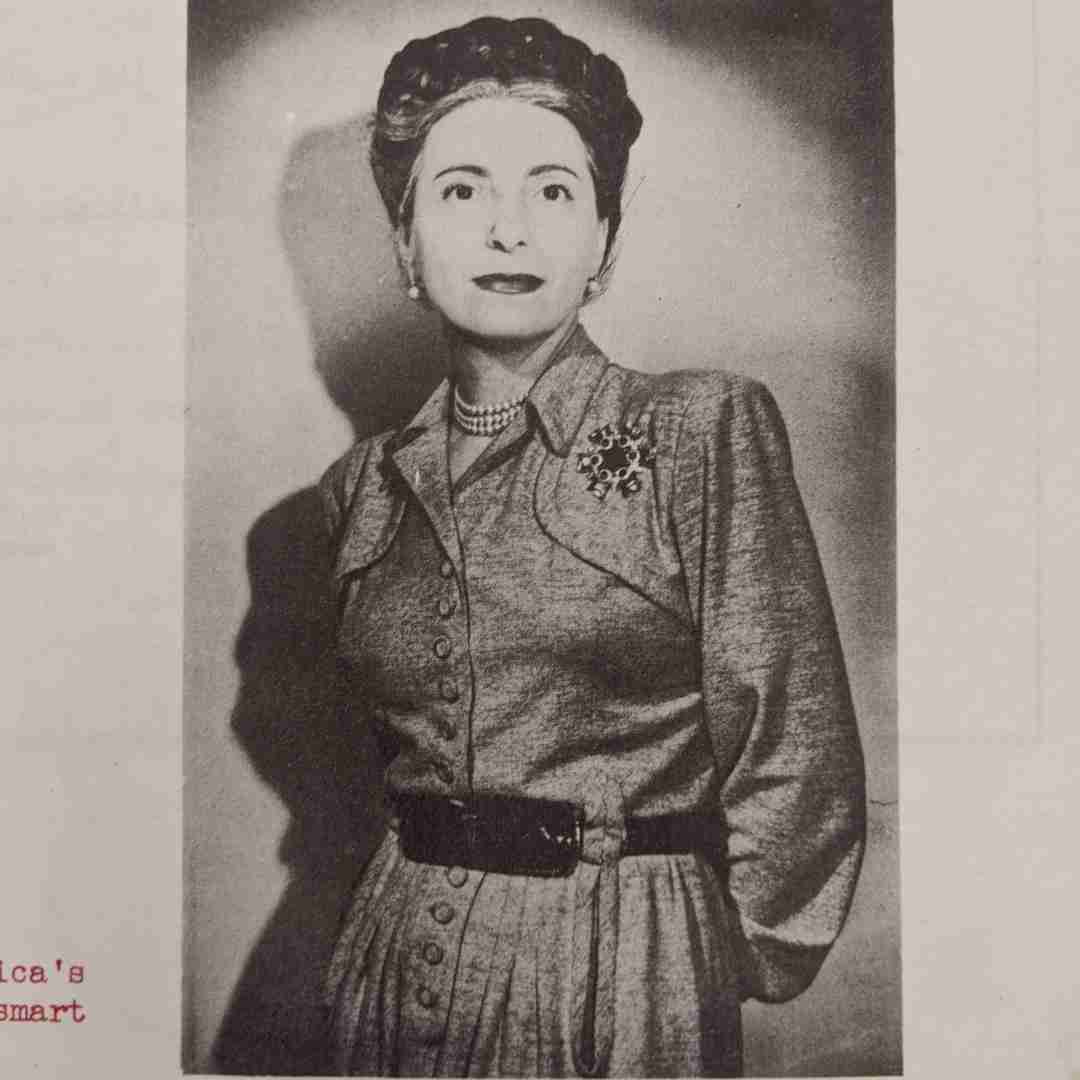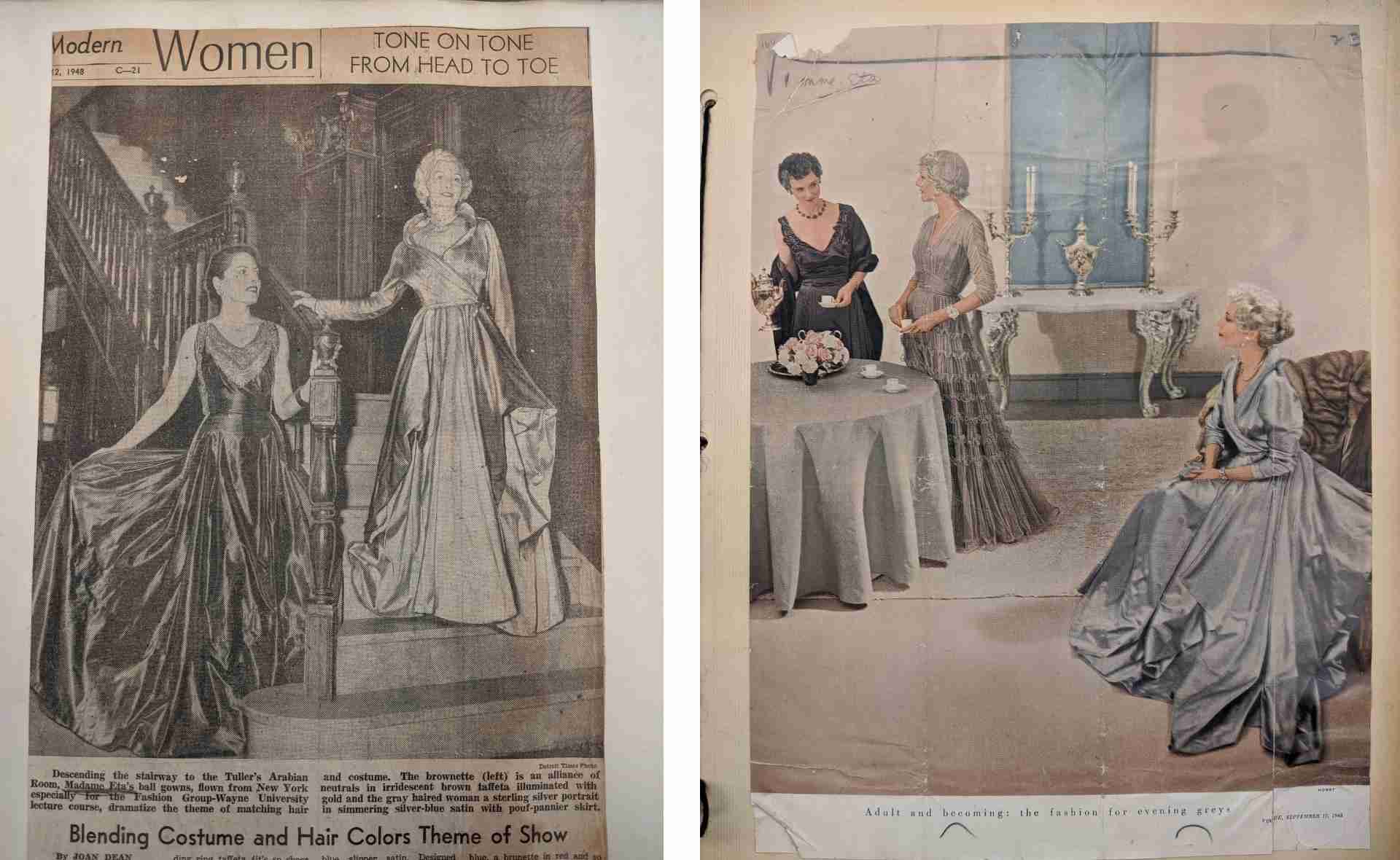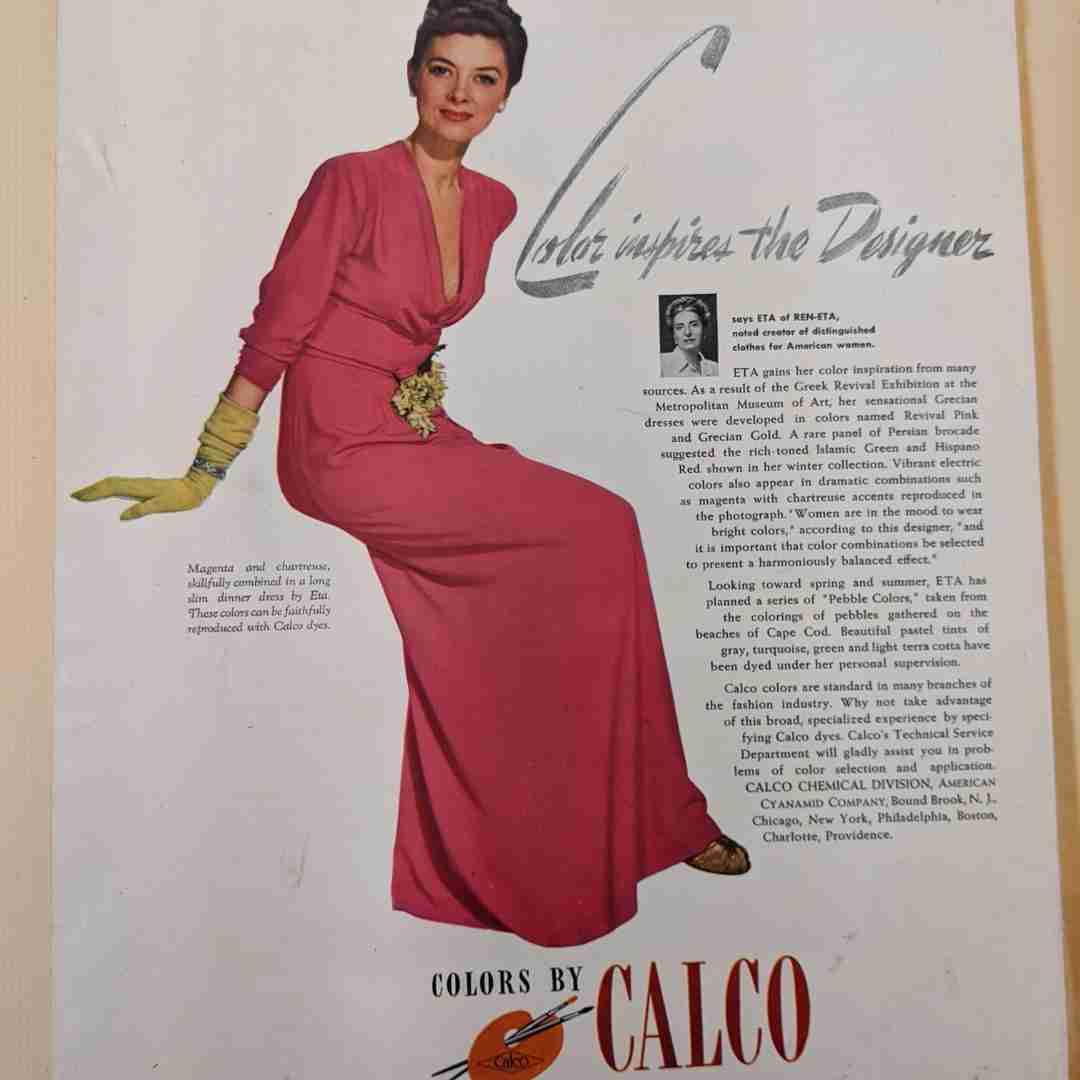Artists often sketch in museum galleries, finding inspiration in the objects that are so neatly on display. It is not very often, however, that their own work is exhibited right beside that from which they took their inspiration. This was the case for Eta Hentz, reverently known in the fashion industry as “Madame Eta,” who became the first designer to hold a fashion show in the esteemed Metropolitan Museum of Art in 1943. Her ancient Greek and Roman-inspired dresses looked right at home as models debuted them in the museum's Classical galleries. She later donated several of them to The Met's permanent collection, where they have stayed to this day.
Eta Valer Hentz was born in Hungary in 1895. Hentz was educated in one of the region's best schools, the Hungarian Royal State Academy of Industrial Arts. She briefly studied in Paris before passing through Ellis Island and emigrating to New York in 1923. That same year, she began her career in New York’s burgeoning fashion industry. Eta worked with some of the American fashion industry’s most well-known producers and retailers to bring her vision to life. Her first collaborative venture, the Eta-Sherman company, paved the way for her eponymous Eta Inc., and eventually the Ren-Eta company, a partnership with Maurice Rentner, the self-styled "King of Fashion."

Image: courtesy of the author and the Fashion Institute of Technology | SUNY, Gladys Marcus Library Special Collections and College Archives
As early as 1936, Eta was creating garments in a size range that surpassed the limited range often marketed to young women, or “misses.” Sold at The Tailored Woman, one of New York City’s premier women’s specialty stores, several of Eta’s dresses came in size 14 to size 44— roughly from sizes XXS to 2XL, in our contemporary, standardized size system. The dresses were advertised in both local and national press, including the New York Times, and Vogue.
Age was not an indicator of fashionability in Eta’s world. Many of her clothes were catered to “mature women.” Eleanor Lambert, the famous fashion publicist wrote a press release for her Fall 1944 collection, noting that “... there were no tongue-in-cheek fashions here, only clothes designed to flatter the American woman regardless of her age.” Eta continued to embrace her “mature” audience in her collections and advertising. Her 25th anniversary fashion show in 1948 included several older models, some of whom had graying hair that beautifully complemented the silver hues of her gowns.

Image: courtesy of the author and the Fashion Institute of Technology | SUNY, Gladys Marcus Library Special Collections and College Archives
Madame Eta also took stature into consideration, something that her contemporaries largely overlooked. In 1945, Eta took inclusivity to new heights with the launch of her “Proportionates” line, which she designed for ‘petite’ or ‘short-average’ women. As such, Proportionates were catered towards women who were under 5 feet 5 inches in height, not the tall models who often adorned the pages of the mass fashion media. That November, Vogue hailed the collection as “...so well designed and cut to the proportions of the average woman’s figure that they require practically no alteration.”
With bold business acumen, Madame Eta’s clientele consisted of otherwise overlooked body sizes and types, and ages. A 1946 radio broadcast “In the Women’s World,” lauded Eta’s lauded ability to “...make even an ordinary gal look like a queen.” In an interview with the Christian Science Monitor in 1948, Eta matter-of-factly explained her reasoning in creating garments that were not made with the 5 foot 8 inches, thin model in mind, noting that “size has nothing to do with an affective appearance… there is no difference between fashion-wise women, whether they wear size 10 or size 40.”
Although gradually became less active in the industry in the 1950s, she continued to play a vital role in the education and development of young women entering fashion, through her continued support of Stephens College, an all-women’s school in Missouri. She participated in their fundraising efforts, was a founding member of the school’s Costume Library in 1957, and even returned to judge their annual runway show in 1970.

Image: courtesy of the author and the Fashion Institute of Technology | SUNY, Gladys Marcus Library Special Collections and College Archives
Although Eta Hentz was a contemporary of the likes of Clare McCardell and Nettie Rosenstein, and she was often cited as part of that contingent of America’s best, most prominent designers, not much is known about her work today. This article is based on the author’s primary source research in the Eta Hentz archives at the Fashion Institute of Technology, and is part of her ongoing project to uncover the life and career of this once prolific, unconventional designer.
About the author:
Doris Domoszlai-Lantner is a New York-based fashion historian and archivist. She holds an M.A. in Fashion and Textile Studies: History, Theory, Museum Practice from the Fashion Institute of Technology (FIT). She has published her work in both academic and commercial platforms, including through Brill Publishers, Intellect, Bloomsbury, Vestoj, and Glamour, amongst others. Doris is an adjunct instructor of Fashion Studies and Fashion History at Massachusetts College of Art and Design, and of Fashion and Architecture at Boston Architectural College.
All photos have been taken by the author, and are courtesy of the author and the Fashion Institute of Technology | SUNY, Gladys Marcus Library Special Collections and College Archives.
